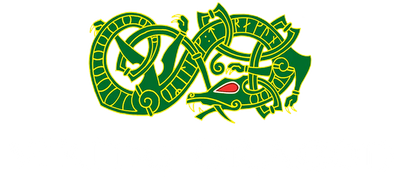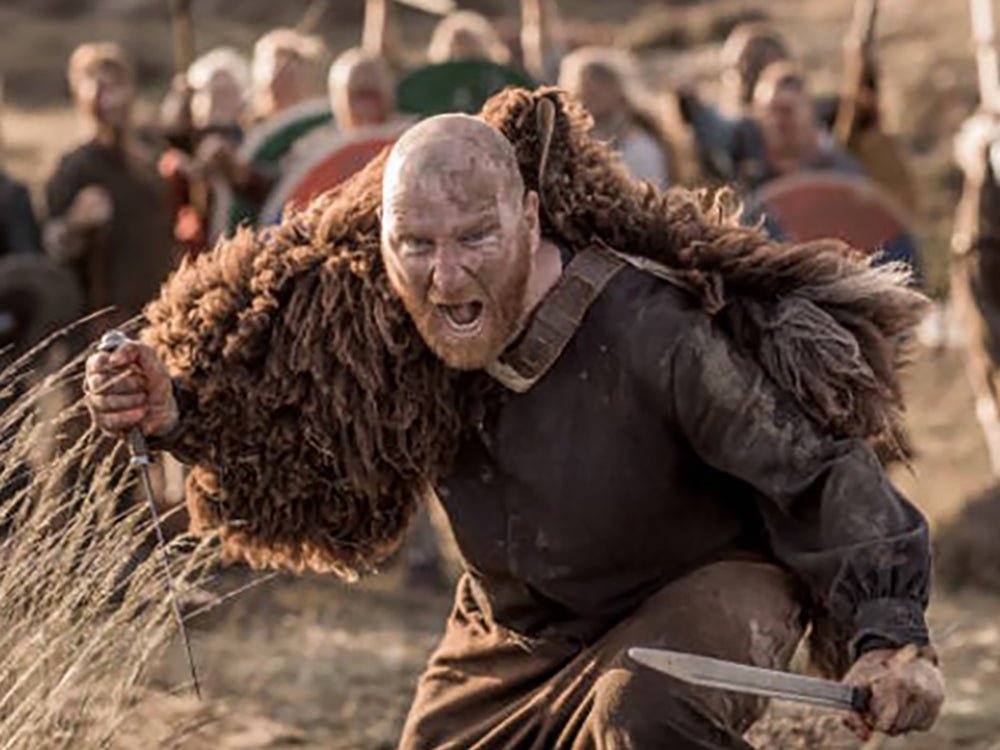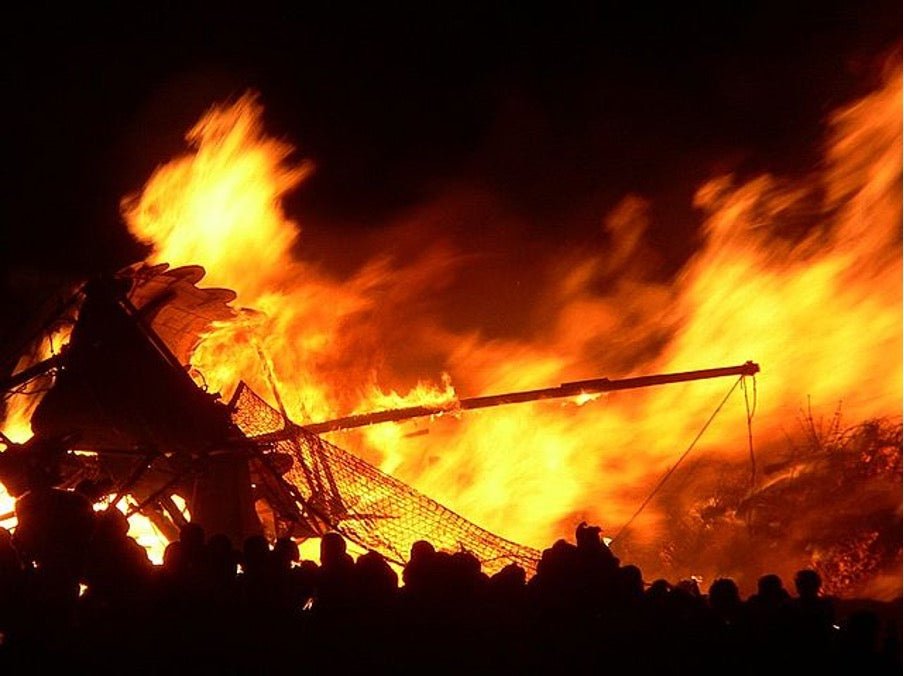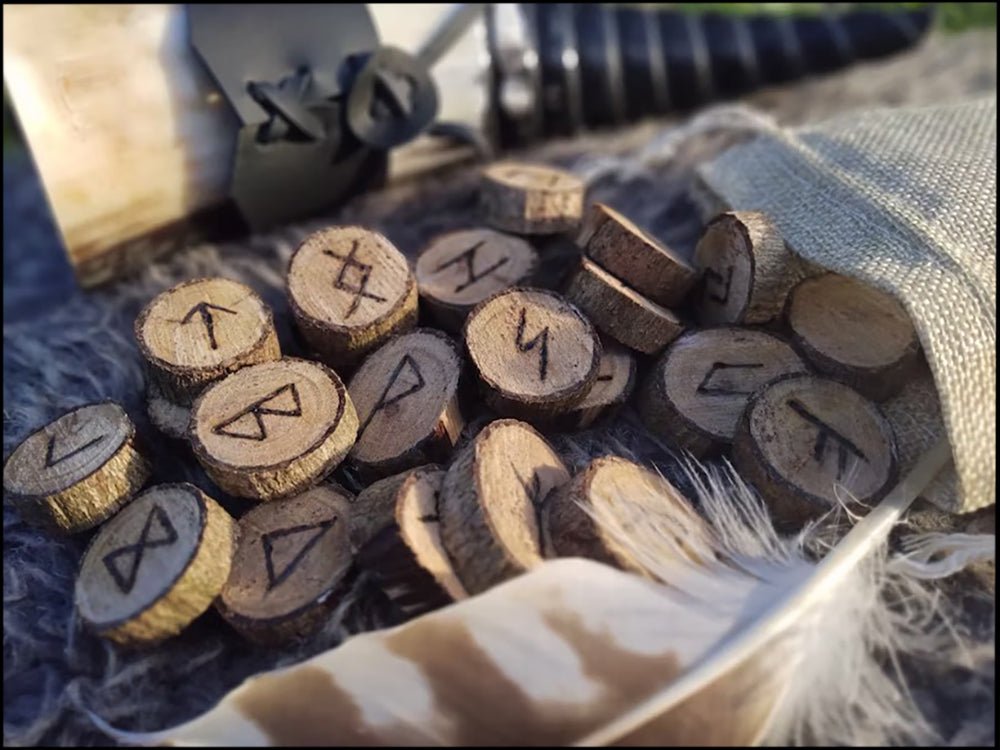Viking history is rife with tales of warriors, either fearless and honourable or violent and cruel depending on whose source you’re reading. During the Viking-era, there was one group of warriors that was so feared for their animalistic rage and total destruction on the battlefield that their name has given us the English term for an uncontrollable frenzy of anger. The Berserkers stood above the fold of ordinary warriors, known for fighting in a trance-like state, their bodies were overtaken by an unstoppable, insatiable rage.
Who were the Berserkers?
Berserkers were an elite legion of Viking warriors, known for their uniquely violent, animalistic fighting style. Before battle, Berserkers would enter a rage-filled state known as ‘berserkergangr’ under which they would be overcome with frenzied aggression. Almost as if they had entered a trace, this overwhelming anger would take over the Berserker’s mind and body, making him a formidable human weapon.
Due to their violent fighting style, Berserkers would lead Viking armies into battle at the forefront of a phalanx formation. This would position them at the front of a rectangular mass of troops, perfectly placed to encounter the full onslaught of the opposing side. Rushing into battle ready to destroy anything in their path, Berserkers were positioned to do maximum damage to the enemy front lines, both physically and psychologically.
As ever when examining a common character or trope in Viking literature, it’s at this point that we must ask whether Berserkers were real or just a figure of Norse mythology. The answer to this question is most likely ‘yes.’ There is a general consensus among Viking historians that there was an elite military unit of rage-filled warriors, known for their extreme violence and aggression in battle. This conclusion comes from the fact that they don’t only appear in Norse literature, but are also depicted on numerous contemporary carvings, tapestries and other visual mediums and eyewitness accounts from Scandinavians and non-Scandinavians alike. Though there are some discrepancies around how they’re presented (mostly relating to their clothing), they are fairly consistent in their general message, even across centuries and regions.
Warriors, Lords and Gods

Given their deadly prowess in combat, Berserkers were considered the most valuable weapon that a Viking king or nobleman could possess in his army or personal guard. Several Viking-era tapestries and carvings show Vikings acting as bodyguards for powerful rulers. The Fornalder Saga describes one chieftain as having as many as 12 Berserkers in his personal security panel.
However, a nobleman seeking the protection of a Berserker unit would have to pay great heed to their unruliness both in and outside of battle. According to the Saga of Saint Olaf, the employment of Berserkers ultimately led to the downfall of King Olav Haraldsson of Norway. At the Battle of Stiklestad in 1030, the Berksers at the front of this army, uncontrollable in their trance-like rage, were unable to keep ranks and attacked early. This slip of control not only lost King Olav the war, but he also lost his life there on the battlefield.
Though Berserkers acted as mercenaries, available for hire by anyone with the money and status, their power ultimately came not from their lord but from the Gods. All warriors looked to Odin for their strength and aggression in battle, but Berserkers were said to be especially favoured by the God of war. It was thought that the power that Berserkers could muster within their rage state was directly given by Odin, and warriors would often pray or leave offerings to the God before going into battle to ask for his assistance in reaching their maximum potential for destruction.
Going Berserk

So how exactly did Berserkers behave while in their battle trance, and how did these elite warriors achieve this state? Known as berserkergangr, this state is described in numerous contemporary accounts as animalistic and wild. Warriors were unable to control themselves and were completely taken over by the need to destroy. A Christian monk who witnessed the siege of Paris in 885 described the opposing army’s Berserker unit as ‘all bare-arms and bare-backed, with mocking laughter, they band their shields on open hands; their throats strained as they shout out odious cries.’
Several sources tell of Berserkers being so taken over by the throws of war that they were unable to wait for the fighting to begin. Enraged warriors stationed at the army’s apex were said to bite their shields, chew rocks or even right each other to satisfy their need for violence. One of the most famous depictions of Berserkers comes from a chess set discovered on the Isle of Lewis, in which one of the pieces shows a fierce warrior with his shield between his teeth.
One aspect of the berserkergangr that still eludes historians is the question of how Berserkers achieved this violent state. Contemporary sources tell of prayer and rituals being used to achieve the battle trance, but many modern researchers posit that psychedelic substances may have also contributed to these warriors’ famous rage. The use of mind-altering substances is thought to have taken place in other Viking rituals, and was commonplace among Germanic tribes of the day.
The most common fungal suspect for the Berserker rage is the Amanita Muscaria, a red-capped toadstool native to Scandinavia. Ingestion of this mushroom causes the eater to enter an ecstatic or furious trance, accompanied by boundless energy and strange movements. Another theory is that a form of nightshade called Hyoscyamus Niger may have been used. This herb spread to Scandinavia from the Mediterranean and has been discovered in Viking-era graves, often those associated with sorceresses. That being said, there is no hard evidence that the Berserkers used substances to enter their rage state. Some historians dispute this theory since psychedelic aids are never mentioned in any sources and substances, and they would likely have caused effects adverse to battle, such as nausea and confusion.
Bear-Skins or Bare-Skins?

Unlike other aspects of Nordic history, there is a fairly strong consensus among historians that Berserkers probably existed in some form. A more heated scholarly debate surrounds the origin of their name, what they wore and whether the two facts are interconnected. There are two theories for the etymology of the word ‘Berserker’: Bear-skins or Bare-skins. Unhelpfully, the same play-on-words that exists in English rendering these two terms nearly identical also exists in Old Norse, making it difficult to discern the Berserker wardrobe.
Proponents of the ‘Bear-Skins’ theory argue that Berserkers wore animal skins into battle, perhaps as a reference to their animalistic war-trace or to show their devotion to Odin, who was associated with bears. Another fact that seems to support this claim is evidence of another, much more elusive, form of elite warrior called úlfheðnar, meaning Wolf Skins. Historians know next to nothing about these fighters since they’re mentioned so sparsely in Nordic literature, and many believe they are just another name for Berserkers. Still, another unit being named after the animal hides that they wore gives credence to the idea that Berserkers fought in bear furs.
On the other hand, there is another camp of historians who argue that Berserkers fought naked, or near-naked, in battle. This would have been used as an intimidation tactic for the opposing army, signalling the strength, confidence and erraticness of these formidable foes.
Unfortunately, looking at the literature or artistic depictions of Berserkers paints a cloudy picture of these warriors’ battle wardrobes. There are depictions of them clothed in bear skins, others of them naked and others of them in normal armour. One explanation could be that Berserkers favoured different clothing in different centuries. These warriors pre-dated the Viking-era, with the earliest reference being on one of the famous Golden Horns found near Møgeltønder, which dates to c. 400 AD. These show semi-naked men brandishing weapons and, interestingly, wearing horned helmets, which are generally considered to be a myth. The Isle of Lewis Chess Set, which shows a warrior in fairly standard armour for the day biting his shield, dates from the 12th century, around 700 years after the creation of the Golden Horns.



